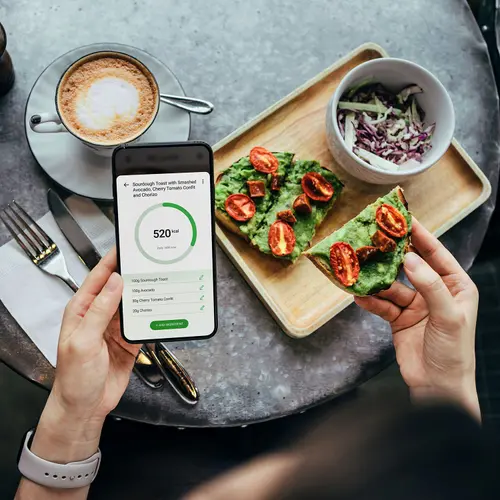The Promise
What if you could eat a lot and still lose weight?
You can on Volumetrics, a diet created by Barbara Rolls, PhD. Unlike diets that are based on deprivation, the Volumetrics approach helps people find healthy foods that they can eat lots of while still losing weight.
The hook of Volumetrics is its focus on feeling full. Rolls says that people feel full because of the types and amounts of food they eat -- not because of the number of calories or the grams of fat, protein, or carbs. So the trick is to fill up on the right foods that fill you up for fewer calories.
Rolls claims that in some cases, following Volumetrics will let you eat more, not less, than you do now, while still slimming down.
You won't lose a lot of weight in a hurry. This is more of a long-term plan.
You'll work toward your weight loss goals by meeting daily calorie goals and daily steps goals for exercise. Bottom line: You’ll lose weight by feeling full on fewer calories.
What You Can Eat and What You Can't
You can eat anything, but you need to pay attention to "energy density," which is the number of calories in a certain amount of food. Foods with high energy density have lots of calories for not much food, but items with low energy density provide fewer calories with more volume.
Rolls splits foods into four categories:
- Category 1 includes “free” or “anytime” fruits, nonstarchy vegetables (such as broccoli, tomatoes, mushrooms), and broth-based soups.
- Category 2 includes reasonable portions of whole grains (such as brown rice and whole wheat pasta), lean proteins, legumes, and low-fat dairy.
- Category 3 includes small portions of foods such as breads, desserts, fat-free baked snacks, cheeses, and higher-fat meats.
- Category 4 includes sparing portions of fried foods, candy, cookies, nuts, and fats.
You’ll eat three meals, two snacks, and a dessert each day.
Volumetrics relies heavily on foods that have a lot of water in them, like many fruits and vegetables, because they fill you up without adding a lot of calories. Just drinking water isn't enough, Rolls says, because it satisfies your thirst but not your hunger.
Alcohol is allowed in moderation, but keep in mind that alcohol is high in calories, and it doesn’t satisfy hunger.
Level of Effort: Low
Limitations: You'll need to keep an eye on the energy density of the foods you choose. For instance, for the calories of a big bowl of soup, you could have only one-sixth of a cheeseburger. The choice is up to you: Which would you rather have, and would you be able to stop after just a nibble or two if you chose the cheeseburger? If you follow the recipes, it will take time to prepare meals and to calculate energy density.
Cooking and shopping: Your grocery shopping should be easy on this plan. Rolls's books include recipes, including many for foods with a lot of water -- like soups, casseroles, stews, and fruit-based desserts. The recipes also cut down on oil, butter, eggs, and cream, and use skim milk, egg whites, yogurt, and applesauce instead.
In-person meetings: No.
Exercise: You’ll start by adding 150 steps a day to your routine, using a pedometer. The first goal is reaching an extra 1,000 steps by the end of the week. The ultimate goal is to log 10,000 steps a day.
Does It Allow for Dietary Restrictions or Preferences?
The plan is flexible enough for vegetarians, vegans, and those who need to restrict salt and fat.
What Else You Should Know
Cost: None beyond your food shopping.
Support: This is a diet you do on your own. but there is a Facebook group www.facebook.com/VolumetricsDiet
What Kathleen Zelman, MPH, RD, Says:
Does It Work?
Absolutely. The advice boils down to a nutritious and sensible diet that any nutritionist would recommend: Cut calories and unhealthy fat, with lots of high-fiber vegetables and fruits.
Rolls has excellent credentials. She's a professor of nutrition and head of nutritional sciences at Pennsylvania State University. She has also written more than 200 research articles. Volumetrics is largely based on the work done in her lab and is backed with solid scientific evidence.
This plan is more of a lifestyle change that will help you make wiser food choices, which will lead to sustainable and long-term weight loss.
Is It Good for Certain Conditions?
The Volumetrics plan is easily adaptable to most health conditions, as well as weight loss.
Losing weight is helpful for a wide variety of conditions, including diabetes, high blood pressure, heart disease, sleep apnea, arthritis, and more. Weight loss may even reduce your need for medications.
Check with your doctor before switching to this plan.
The Final Word
Enjoying a diet based on foods that are naturally high in water and low in energy density is a great strategy to satisfy hunger and fill up on fewer calories. The Volumetrics plan will teach you how to make better food choices and slash calories without deprivation.
This plan is ideal for anyone who wants to eat a healthier but flexible diet. There's advice for people who rely on fast food or eating out. It's ideal for those who like to cook, with recipes to help you prepare delicious foods that are in line with your weight loss goals.

